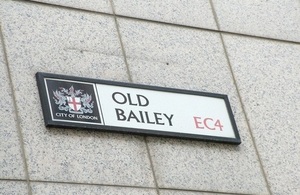Stephen Yaxley-Lennon held in contempt of court
The High Court found Yaxley-Lennon to be in contempt of court, sentencing will take place at a later date.

Stephen Yaxley-Lennon, AKA Tommy Robinson, has been found to be in contempt of court after filming outside Leeds Crown Court during a trial.
In May 2018, Yaxley-Lennon live-streamed a video outside Leeds Crown Court that contained information in breach of reporting restrictions. He also approached defendants and told his followers to “harass them”.
He was originally found to be in contempt by the trial judge at Leeds Crown Court. However, Yaxley-Lennon successfully appealed this finding and the Court of Appeal ordered a rehearing. The judge at that rehearing referred the matter to the Attorney General’s Office.
The Attorney General, Geoffrey Cox, reviewed the case and concluded that contempt proceedings should be instituted. This decision was made independently of government and was based on an assessment of the evidence and a review of whether it was in the wider public interest to institute proceedings.
Today, the High Court found Yaxley-Lennon to be in contempt of court. Sentencing will take place at a later date.
Speaking after the hearing, the Attorney General said:
Posting material online that breaches reporting restrictions or risks prejudicing legal proceedings is a very serious matter and this is reflected in the Court’s decision today.
I would urge everyone to think carefully about whether their social media posts could amount to contempt of court.
Note to editors
The Attorney General was granted permission to bring proceedings on the basis of:
- Publishing information that was subject to a restriction prohibiting any reporting of the trial until a later, related trial had concluded
- Publishing a video encouraging his followers to harass the defendants, creating a substantial risk that their rights would be seriously impeded
- Illegally photographing and intimidating defendants as they entered court